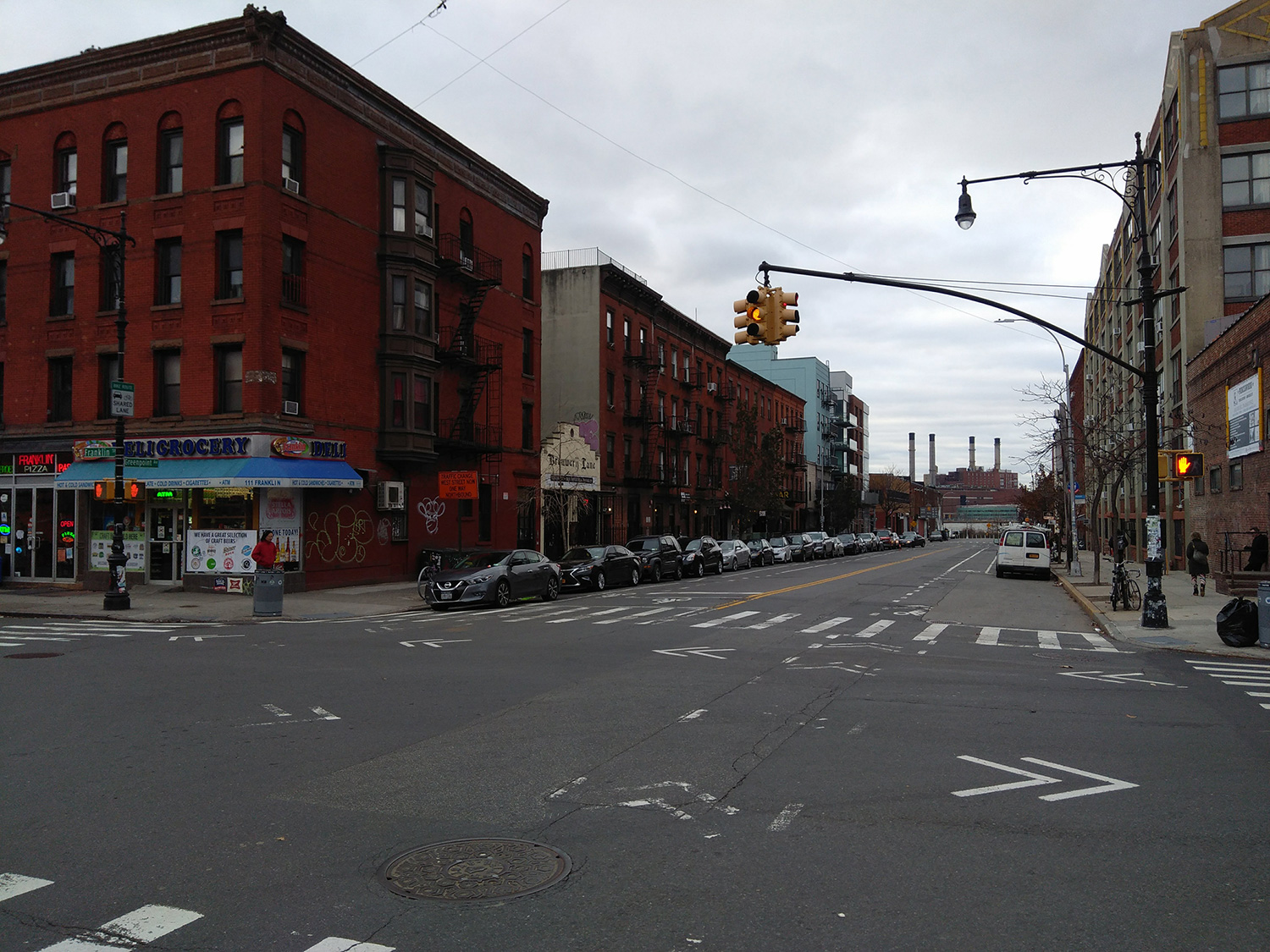“A great display and capable camera aren't enough to save the sluggish ZTE Blade Max View.”
- Great battery life
- 2TB external storage option
- Good display for a budget phone
- Capable camera
- Back panel attracts fingerprints
- Ships with Android 7.1
- Sluggish performance
2018 has been a rough year for ZTE. The Chinese manufacturer was banned from using U.S. equipment in its smartphones after the U.S. Department of Commerce claimed it violated U.S. trade sanctions on Iran and North Korea. After paying a billion-dollar fine and cleaning house, ZTE managed to smooth things over. The company closed out its tumultuous year with two new budget phones.
The ZTE Blade Max View is one of those phones. Coming in at $200, it packs an ample screen and great battery, but can it compete with other similarly priced budget phones like the Nokia 6.1 or Honor 8X? We put it to the test to find out.
Ho-Hum Design
When it comes to design, you’ll never have to worry about the ZTE Blade Max View being mistaken for a flagship, or even a midrange smartphone, for that matter. It is a perfectly respectable, if not ho-hum, budget phone.
On the front there’s a six-inch display. The side bezels are nearly non-existent, but there’s a prominent chin. The top bezel is chunky as well and is home to the selfie cam.
Flip the phone over and you’ll find a matte polycarbonate back that provides a little extra grip. It may be a little more durable than glass sandwich budget phones, like the Honor 8X, but don’t expect it to hide fingerprints any better. We found it to quickly pick up smudges that were impossible to remove without lens cleaner. In addition to the pesky polycarbonate back, there’s also a fingerprint sensor that sits center on the top third of the phone, along with a dual camera array.
The top of the phone is home to a 3.5mm headphone jack, while the bottom sports the USB-C charging port and bottom-firing speakers. You’ll probably want to take advantage of that headphone jack, since we found the speakers to be plenty loud, but unbearably tinny. There’s also Bluetooth 4.2 on board for external speakers or headphones.
On the right side you’ll find the volume rocker and a textured power button. Both are clicky and responsive. A hybrid SIM slot is on the left side of the phone.
When it comes to durability, the ZTE Blade Max View has a few hits and a significant miss. On the plus side, the polycarbonate back and Gorilla Glass display should stand up better against accidental drops than all-glass budget phones like the Honor 8X. The absence of any sort of waterproofing, however, is a definite miss, though there are few budget phones that offer it.
Display that’s made for streaming
Coming in at six inches, the IPS LCD display on the ZTE Blade Max View performs surprisingly well. With a full HD, 2,160 x 1,080-pixel resolution, it’s plenty sharp enough. We found surfing the web and streaming YouTube or Netflix to be an absolute pleasure.
We found surfing the web and streaming YouTube or Netflix to be an absolute pleasure.
Viewing angles were good on the phone, though we found the display to be a little cool. It’s also worth noting there’s no built-in blue light filter on the Blade Max View at this time, though one may appear with the Oreo update in December.
Sluggish processor makes multitasking a pain
The ZTE Blade Max View is powered by Qualcomm’s Snapdragon 435 chip, along with 3GB of RAM and 32GB of onboard storage. Luckily ZTE included a MicroSD slot offering up to 2TB of external storage capacity, since 32GB is unlikely to last long once you begin using the phone.
We used the phone for over a week and found it performed okay with basic tasks like emails and streaming. There’s a slight delay when opening apps, though it’s not unbearable. Scrolling through social media on the ZTE Blade Max View was frustrating with frequent stutters. The phone also struggled with multitasking as it noticeably slowed any time more than a few apps were open.

Gaming was also an issue on the Blade Max View. Both Pokemon Go and PUBG: Mobile struggled and shut down unexpectedly on several occasions. While we don’t expect a budget phone to perform as well as a gaming phone like the Razer Phone 2, we at least expect it to keep up with peers like the Nokia 6.1.
In terms of benchmarks, the Blade Max View fell way behind its competitors. The Nokia 6.1 blew it out of the water in every benchmark, and even the older Honor 7X performed better than the Blade Max View. Benchmarks don’t provide a holistic look at how the phone will perform on a day to day basis, but they do give us some insight into how the phone compares to its peers and this is one of the slowest phones we tested in 2018.
- AnTuTu 3DBench: 58,370
- Geekbench 4 CPU: 667 single-core/2,542 multi-core
- 3DMark Sling Shot Extreme: 290 (Vulkan)
Android Nougat is a letdown
Although Android 9.0 Pie was released months ago, it’s not too surprising to see plenty of smartphones still shipping with Android 8.0 Oreo. What is surprising, however, is to see a new phone like the ZTE Blade Max View ship with Android 7.1.
It’s surprising to see a new phone like the ZTE Blade Max View ship with Android 7.1.
Not too long ago it was the norm to see budget phones ship with bloatware-ridden, older versions of Android. Over the past year though, things have started to change. Both the Nokia 6.1 and Honor 8X run Android 9.0 Pie, and the 6.1 is even scheduled to receive the next iteration of Android in 2019.
To be fair, a representative for ZTE told us the Blade Max View would be updated to Android 8.1 Oreo in December 2018. The representative was not, however, able to confirm if the phone would ever get the Pie treatment, though we wouldn’t hold our breath.
While Android 7.1 is a definite disappointment, the ZTE Blade Max View does have a pleasant surprise in the software department: The phone ships with a stock version of Android. It joins the Moto G6 Play and Nokia 6.1 as a small handful of budget phones with stock Android.
Surprisingly awesome camera
Cameras have long been a sore spot when it comes to budget phones. Luckily the ZTE Blade Max View bucks the trend. We found the phone’s camera performed well in both bright and low light.
Like the similarly priced Honor 8X, the ZTE Blade Max View has two camera lenses on its rear. There’s a 16-megapixel primary lens paired with a 2-megapixel lens for depth sensing. The front-facing camera comes in at 8-megapixels.
While low light photos tend to be a real weak spot for budget phones, the Blade Max View was a pleasant surprise.
We found the camera quick to launch, though there is a noticeable delay after pressing the shutter button — a problem we’ve seen on other budget phones like the Nokia 6.1. You’ll want to remain still after pressing the shutter button, otherwise you’ll end up with blurry photos.
During our test, we found daylight photos had excellent color accuracy and detail. And while the photos, look great for a budget phone, they did appear a little flat.
Low light photos tend to be a real weak spot for budget phones, but once again the Blade Max View was a pleasant surprise. Our night photos came out with decent color accuracy and detail. We found the photos had less noise than expected and lens flare wasn’t as big a problem as it usually is in a phone this price.
Massive battery
The ZTE Blade Max View packs a chunky 4,000mAh battery. That’s not too uncommon for a phone with a six-inch plus display, but the Blade Max View still performed admirably during our review.
We had no problem getting over a day from a single charge. In fact, we left with the office with the phone completely charged on a Friday at 5:00 p.m. and managed to make it to Sunday at 3:00 p.m. with conservative use. That’s about the same performance we saw on the similarly priced Nokia 6.1, but it lags a little behind the Honor 8X.
If you do manage to find yourself running low on power, however, the ZTE Blade Max View supports Qualcomm Quick Charge 2.0. When we used the adapter in the box, we managed to get about a 55 percent boost over the span of a half hour.
Price, availability, and warranty information
The ZTE Blade Max View costs $200 and you can buy it direct from ZTE or from a few other online retailers. It offers support for AT&T, Verizon, and T-Mobile in the U.S.
ZTE offers a limited one-year warranty that protects the handset from manufacturing defects. It does not cover any damage caused by normal wear and tear or accidental drops.
Our Take
While the ZTE Blade Max View has a great display and capable camera, the sluggish Snapdragon 435 makes it a poor choice in a very competitive budget phone market.
Is there a better alternative?
There are a few better alternatives. If you don’t mind a slightly smaller display, the Nokia 6.1 has better hardware, and is one of the few budget phones running Android 9.0. If a phablet-sized display is an absolute must, it may be worth waiting, since we’re fairly confident the Honor 8X will make its way to the states in early 2019.
How long will it last?
The ZTE Blade Max View should last a few years with proper care. That said, the lackluster processor is already sluggish, and will likely become unbearable for many people within a year or two.
Should you buy it?
No. Although the ZTE Blade Max View has some great features, the Snapdragon 435 chip makes this phone a no-go.












